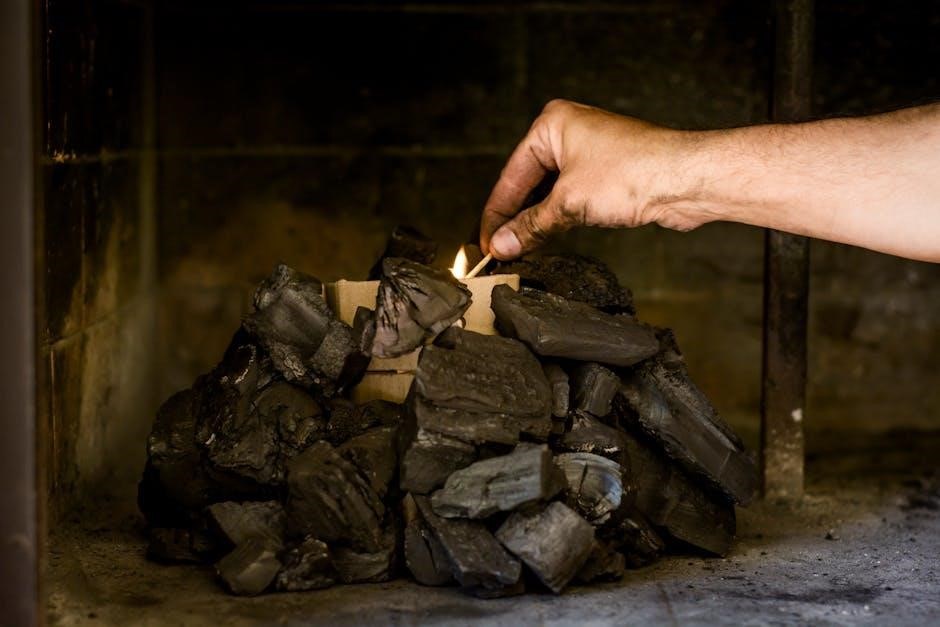First Alert carbon monoxide detectors are essential for protecting homes from CO threats. This manual provides crucial information on installation‚ maintenance‚ and troubleshooting to ensure optimal performance and safety.

1.1 Importance of Carbon Monoxide Safety
Carbon monoxide (CO) is a colorless‚ odorless‚ and deadly gas that can cause severe health issues or death in minutes. Properly installed and maintained detectors are critical for early detection‚ ensuring timely evacuation. CO safety is paramount‚ as it can leak from faulty fuel-burning appliances‚ clogged vents‚ or poor ventilation. First Alert detectors provide reliable alerts‚ but users must adhere to installation and maintenance guidelines to maximize protection. This manual emphasizes the necessity of understanding CO risks and ensuring detectors function correctly. Failure to address CO threats can lead to tragic consequences‚ making awareness and preparedness essential for home safety.
1.2 Overview of First Alert Carbon Monoxide Detectors
First Alert carbon monoxide detectors are designed to provide reliable protection against CO threats. They are equipped with advanced sensors that detect CO levels and alert users through loud alarms and LED indicators. These detectors are user-friendly‚ with features like battery operation‚ easy installation‚ and wireless interconnectivity with other First Alert devices. They also include essential functions such as low-battery indicators and test/silence buttons. The detectors are built to meet safety standards‚ ensuring accurate detection and reliable performance. By offering a range of models‚ First Alert accommodates different home layouts and user preferences‚ providing comprehensive protection against carbon monoxide risks.
1.3 Purpose of the Manual
This manual serves as a comprehensive guide for installing‚ operating‚ and maintaining your First Alert carbon monoxide detector. It provides detailed instructions to ensure proper setup and functionality‚ helping users understand the device’s features and safety protocols. The manual also includes troubleshooting tips to address common issues‚ such as false alarms or battery-related problems. By following the guidelines outlined in this manual‚ users can maximize the detector’s performance and ensure their safety. Additionally‚ it covers warranty information and support options‚ offering a complete resource for users to rely on. This guide is designed to be user-friendly‚ making it accessible for both installers and everyday users to understand and utilize the detector effectively.
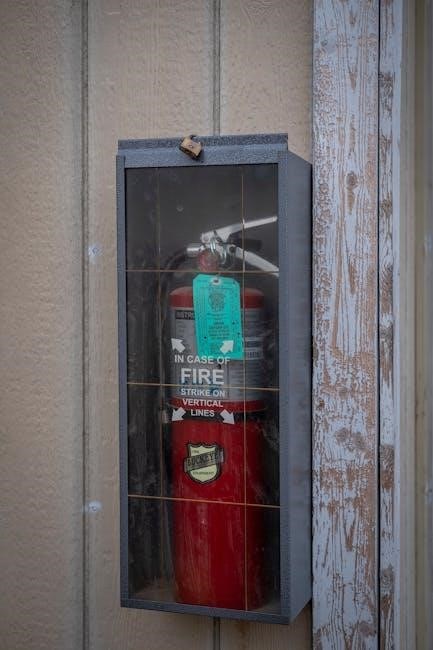
Understanding the First Alert Carbon Monoxide Detector Manual
This manual provides essential guidance on installing‚ operating‚ and troubleshooting your First Alert CO detector‚ ensuring safe and effective use to protect against carbon monoxide threats.
2.1 Structure of the Manual
The manual is organized into clear sections to guide users through installation‚ operation‚ and troubleshooting. It begins with an introduction to the detector‚ followed by detailed installation instructions. The manual also covers maintenance tips‚ such as battery replacement and cleaning‚ to ensure optimal performance. Troubleshooting sections address common issues like false alarms and chirping sounds‚ providing step-by-step solutions. Additionally‚ it explains warranty information and customer support options. The structure ensures users can easily navigate and find the information they need to safely and effectively use their First Alert carbon monoxide detector.
2.2 Key Safety Warnings and Precautions
The manual emphasizes critical safety warnings to ensure proper usage of the First Alert carbon monoxide detector. It advises not to use the detector as a substitute for combustible gas or smoke detectors. Users are cautioned to install additional detectors as needed for comprehensive safety. The manual also warns against using detector guards without prior evaluation‚ as this could impair functionality. Proper installation and maintenance are stressed to avoid false alarms and ensure accurate detection. Adherence to these precautions is essential to maximize safety and prevent potential hazards. By following these guidelines‚ users can effectively protect their homes and families from carbon monoxide threats while avoiding common pitfalls that might reduce the detector’s effectiveness.

2.3 Components of the Detector
Your First Alert carbon monoxide detector consists of several key components designed to ensure accurate detection and reliable performance. The sensor is the core of the device‚ responsible for detecting dangerous CO levels in the air. LED indicators provide visual alerts‚ with colors signifying different statuses‚ such as red for an alarm or green for normal operation. A test button allows users to verify the detector’s functionality‚ while a silence button can temporarily mute nuisance alarms. The battery compartment houses the power source‚ typically AA batteries‚ ensuring continuous monitoring. Mounting hardware‚ such as screws or adhesive strips‚ is included for secure installation. Understanding these components is essential for proper setup and operation to maintain safety and effectiveness.
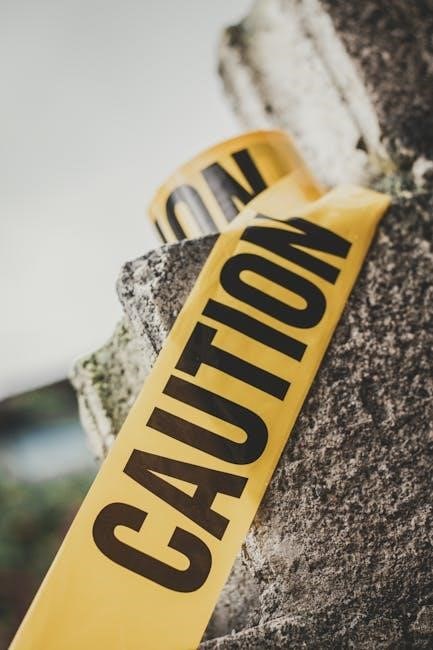
Installation of the First Alert Carbon Monoxide Detector
Proper installation is crucial for ensuring your First Alert CO detector functions effectively. Choose a central location‚ avoid areas near vents‚ and follow manual guidelines for mounting and powering the device.
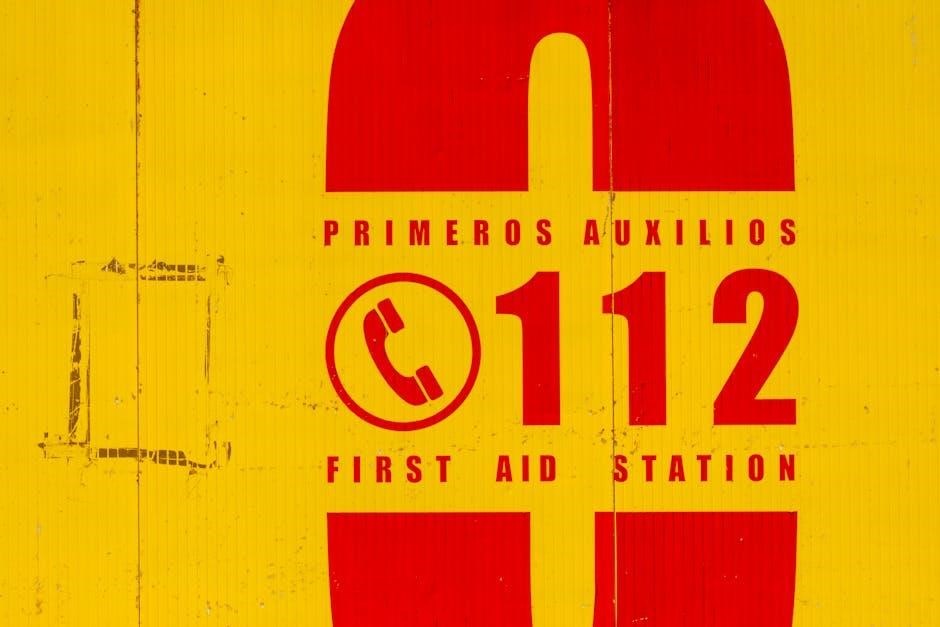
3.1 Choosing the Right Location
Choosing the right location for your First Alert carbon monoxide detector is essential for ensuring optimal performance and safety. The detector should be installed in a central location‚ such as a hallway or living area‚ to provide comprehensive coverage of your home. It is recommended to place the detector near sleeping areas to alert occupants during sleep. Avoid installing the detector in areas with high humidity‚ extreme temperatures‚ or direct sunlight‚ as these conditions may interfere with its functionality. Additionally‚ keep the detector at least 5 feet away from fuel-burning appliances and vents to minimize false alarms. Finally‚ ensure the detector is mounted at the correct height‚ as carbon monoxide is slightly lighter than air and may concentrate near the ceiling.
3.2 Step-by-Step Installation Guide
Begin by carefully unpacking the First Alert carbon monoxide detector and ensuring all components are included. Choose a location based on the manufacturer’s recommendations‚ typically 5 feet from the floor to detect CO effectively. For wall mounting‚ locate the included bracket and screw it into the wall using a drill or screwdriver. Gently hang the detector on the bracket‚ ensuring it is level. If using a tabletop option‚ place it on a stable surface. Insert the batteries as directed‚ making sure they are securely seated. Test the detector by pressing the test button to ensure it emits a loud alarm sound. Finally‚ review the user manual for any additional settings or features‚ such as silencing the alarm or interconnecting with other devices. Proper installation ensures reliable performance and safety.
3.3 Mounting the Detector
Mounting the First Alert carbon monoxide detector securely is crucial for accurate detection and reliability. Begin by locating the included mounting bracket and attaching it to your chosen wall or surface using a drill or screwdriver. Ensure the surface is level and sturdy to prevent the detector from tilting or falling. Once the bracket is in place‚ gently hang the detector on the bracket‚ making sure it clicks securely into position. For added stability‚ tighten the screws provided. Always follow the manufacturer’s guidelines for proper alignment and ensure the detector is not obstructed by furniture or curtains. Proper mounting ensures the detector functions correctly and provides reliable protection. Regularly inspect the mounting hardware to ensure it remains secure over time.
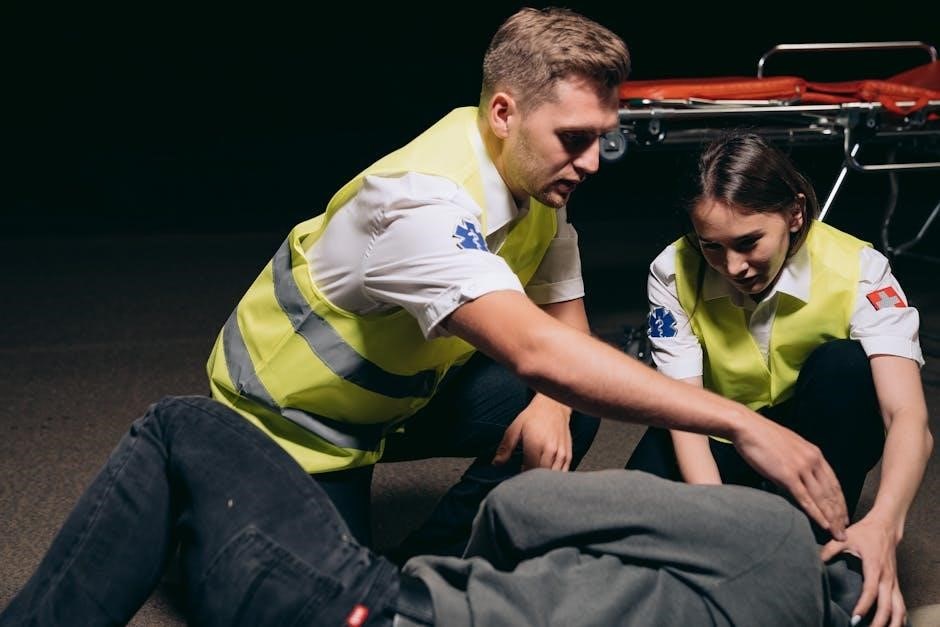
Maintenance and Upkeep
Regular maintenance ensures your First Alert carbon monoxide detector functions optimally. Clean the detector with a soft cloth‚ check battery levels‚ and inspect for dust buildup. Replace batteries annually or as indicated; Test the alarm monthly and ensure all components are secure. Address any issues promptly to maintain reliability and safety.
4.1 Battery Replacement and Care
Proper battery maintenance is crucial for ensuring your First Alert carbon monoxide detector operates reliably. Replace batteries annually or when the low-battery chirp sounds. Use the recommended battery type (e.g.‚ AA or 9V) to avoid damage. Open the battery compartment gently‚ remove the old batteries‚ and insert the new ones‚ matching the polarity indicators. Avoid mixing old and new batteries. After replacement‚ test the detector by pressing the test button to confirm it’s functioning correctly. Store spare batteries in a cool‚ dry place. Never disregard the low-battery warning‚ as it indicates the detector’s ability to alert you is compromised.
4.2 Cleaning the Detector
Regular cleaning ensures your First Alert carbon monoxide detector operates efficiently. Dust and debris can accumulate and interfere with the sensor. Use a soft‚ dry cloth or a small‚ soft-bristled brush to gently wipe the exterior and vents. For interior cleaning‚ turn off the power and carefully vacuum the openings using a soft nozzle attachment. Avoid using chemicals‚ water‚ or abrasive materials‚ as they may damage the sensor or housing. Cleaning should be performed every 6 months or when visible dust buildup occurs. Never insert objects into the detector’s openings‚ as this could cause irreversible damage. After cleaning‚ test the detector to ensure proper functionality.
4.3 Regular Inspection and Testing
Regular inspection and testing of your First Alert carbon monoxide detector are crucial to ensure its reliability. Perform a monthly check by pressing the test button to verify the alarm sounds. Visually inspect the detector for damage‚ wear‚ or tampering. Ensure no debris blocks the sensor openings. Test the detector using a carbon monoxide test kit‚ following the manufacturer’s instructions. Additionally‚ check the expiration date on the detector‚ as most models have a limited lifespan. Replace the detector if it is past its expiration date. Keep records of inspections and tests for future reference. A well-maintained detector provides peace of mind and ensures safety in case of a carbon monoxide leak.

Troubleshooting Common Issues
This section helps resolve issues like false alarms‚ chirping sounds‚ sensor malfunctions‚ and battery problems. Follow step-by-step solutions to ensure your detector functions correctly and reliably.
5.1 Resolving False Alarms
False alarms on your First Alert carbon monoxide detector can occur due to high humidity‚ cooking fumes‚ or dust. To resolve this‚ press the “Test/Silence” button to silence the alarm. Next‚ check for potential sources of interference‚ such as nearby cooking appliances or steam. Ensure the detector is at least 5 feet away from fuel-burning appliances. Clean the detector by gently vacuuming the openings to remove dust. If the issue persists‚ consider relocating the detector to a less prone area. Finally‚ test the detector by pressing the “Test” button to ensure it is functioning correctly after resolving the issue. Regular maintenance can help prevent future false alarms.
5.2 Addressing Chirping or Beeping Sounds
Chirping or beeping sounds from your First Alert carbon monoxide detector typically indicate a low battery or the end of the detector’s life cycle. To address this‚ first‚ check the battery level. If the battery is low‚ replace it with a fresh one of the recommended type. Ensure the battery is properly seated and the drawer is securely closed. If the issue persists‚ reset the detector by pressing and holding the “Test/Silence” button for 5 seconds. If the chirping continues‚ the detector may need to be replaced‚ as it could be at the end of its service life. Always refer to the manual for specific instructions tailored to your model.
5.3 Fixing a Malfunctioning Sensor
If your First Alert carbon monoxide detector’s sensor is malfunctioning‚ it may fail to detect CO levels accurately. First‚ ensure the detector is clean and free from dust or debris‚ as contamination can impair sensor function. Turn off power to the unit‚ gently clean the sensor with a soft cloth‚ and allow it to dry. If issues persist‚ reset the detector by pressing and holding the “Test/Silence” button for 5-10 seconds. If the sensor still does not function properly‚ it may need replacement. Refer to the manual for specific instructions or contact First Alert support for assistance. A faulty sensor should be addressed promptly to ensure reliable CO detection.
5.4 Battery Drawer Issues
If you encounter issues with the battery drawer on your First Alert carbon monoxide detector‚ such as difficulty opening or closing it‚ ensure the drawer is aligned properly with the detector. Gently clean the area around the drawer to remove any dirt or debris that may be causing obstructions. If the drawer still does not function smoothly‚ check for any blockages or bent parts. For models with a sliding drawer‚ wiggle it slightly while pushing or pulling to dislodge any stuck components. Always ensure the battery drawer is fully closed to maintain proper power supply to the detector. If the issue persists‚ consult the manual or contact First Alert support for further assistance. A malfunctioning battery drawer can affect the detector’s performance‚ so address it promptly to ensure reliable CO detection.
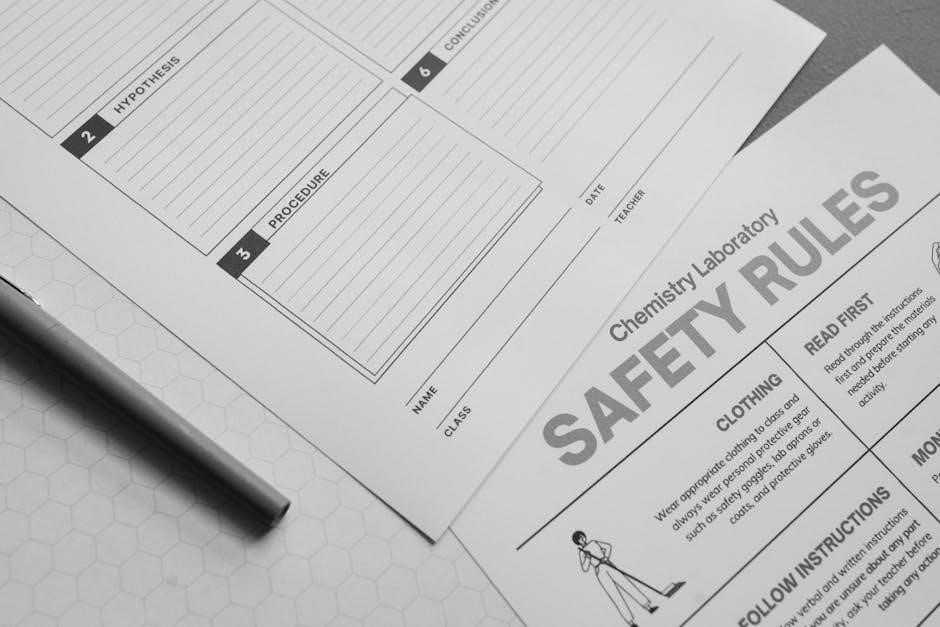
Understanding Alarm Sounds and Lights
First Alert detectors use distinct sounds and LED patterns to signal CO presence‚ malfunctions‚ or low battery. The manual details these indicators for accurate interpretation and response.
6.1 Interpreting Different Alarm Patterns
The First Alert carbon monoxide detector uses distinct alarm patterns to indicate different situations. For CO detection‚ it emits four loud beeps in a row‚ repeating until silenced. A red LED flashes during this sequence. A single chirp with a steady red LED signals a malfunction‚ while a yellow LED indicates low battery. Understanding these patterns is crucial for responding appropriately. Always refer to the manual for detailed explanations of each alarm type and corresponding actions. Proper interpretation ensures safety and reduces unnecessary alarms. Familiarize yourself with these signals to react correctly in emergencies or maintenance needs.
6.2 LED Indicators and Their Meanings
The First Alert carbon monoxide detector features LED indicators to provide visual status updates. A steady green light indicates normal operation‚ while a flashing green light signals the unit is in silence mode. A red light flashing with four beeps indicates a CO alarm. If the red light flashes without beeps‚ it signals a fault or low battery. A yellow light indicates a low battery or end-of-life warning. These visual cues help users quickly assess the detector’s status and respond accordingly. Refer to the manual for a detailed explanation of each LED pattern to ensure proper understanding and maintenance of the device.
Warranty and Support Information
First Alert offers a limited warranty covering defects in materials and workmanship for a specified period. Visit their website or contact customer support for details and assistance.
7.1 Warranty Terms and Conditions
First Alert carbon monoxide detectors are backed by a limited warranty that covers defects in materials and workmanship. The warranty period typically lasts five years from the date of purchase for the detector and one year for the battery. To maintain warranty validity‚ users must follow installation and maintenance guidelines outlined in the manual. Improper installation or tampering with the device may void the warranty. For warranty claims‚ users should contact First Alert Consumer Support with proof of purchase. The warranty does not cover damage caused by misuse‚ accidents‚ or natural disasters. Full terms and conditions are available on the First Alert website or by requesting a copy from their support team.
7.2 Contacting First Alert Consumer Support
For questions‚ concerns‚ or assistance with your First Alert carbon monoxide detector‚ contact their dedicated consumer support team. You can reach them via phone at 1-800-323-9005‚ Monday through Friday‚ from 8:00 AM to 7:00 PM EST. Additionally‚ support is available via email through the contact form on the First Alert website. When contacting support‚ have your detector’s model number‚ serial number‚ and purchase date ready to expedite assistance. For troubleshooting or warranty-related inquiries‚ visit their official website for detailed resources and FAQs. First Alert is committed to providing reliable and timely support to ensure your safety and satisfaction with their products.

Interconnectivity with Other Devices
First Alert carbon monoxide detectors can interconnect with other compatible devices‚ enhancing whole-home safety. Wireless connectivity ensures all alarms sound when one detects CO‚ providing seamless protection.
8.1 Connecting to Other First Alert Alarms
First Alert carbon monoxide detectors can wirelessly interconnect with other First Alert alarms‚ such as smoke detectors‚ to create a unified safety system. This feature ensures that if one alarm detects carbon monoxide‚ all interconnected devices will sound‚ providing complete home coverage. To connect your CO detector to other First Alert alarms‚ follow these steps: press and hold the test button until the alarm chirps‚ then release and repeat on all units to synchronize. Ensure all devices are compatible and within range for reliable communication. This interconnected system enhances safety by alerting everyone in the household‚ even if the danger is detected far from their location. Always refer to the manual for specific pairing instructions.
8.2 Ensuring Wireless Interconnectivity
To ensure reliable wireless interconnectivity between your First Alert carbon monoxide detector and other compatible devices‚ follow these steps. First‚ verify that all devices are part of the same wireless network and are compatible with one another. Ensure they are placed within the recommended range to maintain a strong signal. Avoid physical obstructions‚ such as walls or floors‚ which may weaken connectivity. Sync the devices by pressing and holding the test button on each unit until they chirp‚ confirming the connection. Regularly test the system to ensure all devices communicate properly. If issues arise‚ restart the devices or refer to the manual for troubleshooting tips. Proper wireless interconnectivity ensures seamless whole-home protection.
Proper installation‚ maintenance‚ and understanding of your First Alert carbon monoxide detector ensure safety and peace of mind. Always follow guidelines for optimal performance and protection.
9.1 Summary of Key Points
This manual provides essential guidance for installing‚ maintaining‚ and understanding your First Alert carbon monoxide detector. Emphasizing safety‚ it outlines critical steps for proper installation‚ regular maintenance‚ and troubleshooting. Key points include the importance of carbon monoxide safety‚ understanding alarm signals‚ and ensuring the detector is functioning correctly. By following the guidelines‚ users can maximize protection and reliability. Always refer to the manual for specific instructions and safety precautions to ensure the detector operates effectively. Remember‚ a well-maintained detector is crucial for safeguarding lives and property from the risks of carbon monoxide poisoning.
9.2 Final Safety Reminders
Always prioritize carbon monoxide safety by ensuring your detector is properly installed‚ maintained‚ and tested regularly. Never ignore alarm signals‚ as they indicate potential danger. Replace batteries annually or as specified‚ and ensure the detector is replaced every 10 years. Avoid placing detectors near vents or direct drafts‚ which could reduce accuracy. Install a detector on every level of your home and near sleeping areas for comprehensive coverage. Familiarize yourself with local building codes and regulations regarding carbon monoxide detectors. By following these guidelines‚ you can create a safer living environment and protect your family from the risks of carbon monoxide exposure.
